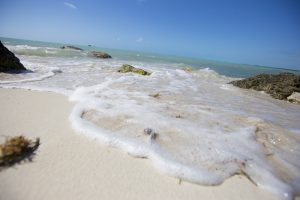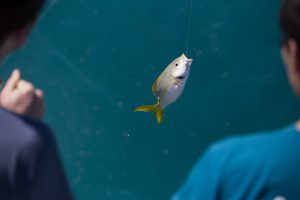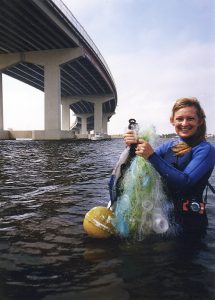When you hear the word gyre (pronounced jI-ur), what’s the first thing that comes to mind? Perhaps, “What the heck is a gyre?” or you might think of plastic or garbage or an ocean current. Technically speaking “a gyre is a large system of rotating currents.” These rotating currents are formed by many factors due ultimately to the rotation of the earth, but also the resulting winds and tides. Temperature and salinity also play a role in ocean currents. I don’t want to get too much into the science of that here, but you can click on the links above to find out more.

Why The Ocean Matters
As we are about to celebrate World Oceans Day on Friday, June 8th, it’s important for us to understand the impacts and importance of these ocean gyres, but also the ocean itself. While trees are often given the credit for providing us with oxygen, the ocean is the source for over 50% of the air we breathe! Thanks to the gyres, the ocean also serves as a massive regulator of climate, bringing warmer waters (and resulting warmer air) from the equator north and cooler waters from the north south to keep us from getting too hot or too cold. The ocean covers 70% of the Earth’s surface, so it shouldn’t go unnoticed or unappreciated.
But wait, there’s more!
And, while I’m no economist, I am a consumer and the oceans make it possible for me to have access to pretty much anything I could ever want. According to NOAA, 76% of all U.S. trade involves some form of transportation via the oceans. I could go on and on about the economic impact, but the point is, the ocean is extremely important to our everyday lives: the air we breathe, the climate we live in, the products we consume, the recreational activities we get to enjoy, the jobs it supports, you get the idea.



Okay, so back to the gyres.
Gyres are important. Oceans are important. But what we have yet to establish is we are also negatively impacting our oceans every day and in many ways the gyres make these impacts hard to see. Even if we consider ourselves good stewards, I don’t think any of us can say we have never used a non-recyclable, single-use plastic product (straw, to-go container, bag), or accidentally littered (trash fell out of your pocket, blew out of the car, a toy left at the beach), or took medication to relieve symptoms, or dare I say took a shower with shampoo and body wash. Remember, there is no such place as “away”. While we have great systems in place to manage recycling, trash, and water quality, we aren’t perfect, and these imperfections are impacting our oceans, marine life and ultimately us.
Here’s some facts about pollution in the ocean:

- It is estimated that 4.8 to 12.7 million metric tons of plastic waste entered the ocean in 2010 alone. If you’re like me and have no idea what that means, that’s equivalent to dumping a garbage truck of plastic into marine waters every minute!
- At least 115 marine species have been impacted by entanglement from marine debris
- Plastic bags are the most commonly ingested type of marine debris by sea turtles
- A total of 26 marine mammal species have been documented to have ingested marine debris
- Over 1/3 of sea bird species have ingested plastic
- Oh, and if you haven’t heard, there’s a new category of plastics called microplastics. That is, those plastics that are smaller than 1/8th of an inch in size.
- There’s also an even scarier category of plastics called nanoplastics. I won’t even go there.
And of course there’s more pollution that’s harming our ocean ecosystems than I have time to tell you about here.
Celebrate World Oceans Day!
This World Oceans Day we will be focusing on plastic pollution. While it’s easy to think that plastic pollution in the ocean comes from activities on the ocean, research indicates the majority are actually from land-based activities. On Friday, June 8th we are partnering with the Marine Exploration Center to share a new documentary called “Smog of the Sea” talking about plastic pollution and I will be available after the first screening for a Q&A session. So I won’t spoil all the facts now, but will encourage you to come and learn and see what you can do to help our oceans.
If you can’t wait until June 8th, or aren’t available then, you can check out the resources on my water webpage.
Sources: https://oceanservice.noaa.gov/facts/gyre.html https://oceanservice.noaa.gov/facts/why-care-about-ocean.html https://www.iswa.org/fileadmin/user_upload/Calendar_2011_03_AMERICANA/Science-2015-Jambeck-768-71__2_.pdf https://marinedebris.noaa.gov/what-we-know-about-entanglement-and-ingestion All photos are courtesy of UF/IFAS File Photos.
 0
0
